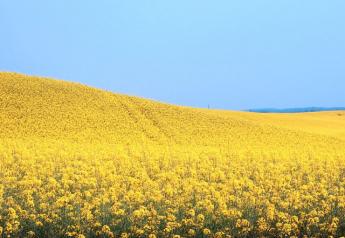Severe Drought Sends Cottonseed to Near $500/ton

Texas is experiencing its driest consecutive nine-month period ever and the state’s crops are in extremely rough shape. Producers are abandoning irrigated fields of cotton, corn, sorghum and hay as wells run dry.
"Much of the dryland corn is a complete disaster," says Mark Welch, grain economist at Texas A&M University. The majority of Texas producers grow more than one crop and irrigated farms typically grow several. Welch says that growers who are running out of irrigation water are now deciding which crop to abandon. "Texas hay production is going to be a disaster," Welch says.
Texas—the bull’s eye for the drought that stretches from Arizona to Georgia—is not a huge player in the U.S. corn market, and this year high cotton prices enticed growers to shift some corn acreage into cotton. According to USDA’s Acreage report, released June 30, Texas growers planted 1.95 million acres to corn, a reduction of 350,000 acres from last year. "Our acres were planted, but now we are having a disastrous season," says Welch. "At this point, I’d expect we would make half a crop on corn and sorghum both."
Cotton devastated
While not a huge player in the corn market, Texas is the No. 1 cotton-producing state, accounting for about half of all U.S. production. According to USDA’s Acreage report, Texas growers planted 7.1 million acres of cotton, or 52% of the U.S. crop and an increase of nearly 1.6 million acres from last year.
The state’s cotton, about half of it dryland and half irrigated, is in dire shape. "A scattered patchwork of cotton will be harvested from all over the state," says John Robinson, agricultural economist specializing in cotton at Texas A&M University. But that’s about as good as it gets.
In West Texas where the majority of dryland cotton is grown, record abandonment has occurred. "I can’t get anyone in the dryland regions to tell me they see or know of any dryland production," says Robinson. The West Texas crop accounts for about two-thirds of the state’s total cotton acreage. "We are going to lose almost all of the dryland production out there," he says.
West Texas’ irrigated cotton is also in rough shape. "Growers spent a ton on (irrigation) just to get a crop up and growing," says Robinson. But seeds in many fields didn’t germinate due to water evaporation. "It’s been so hot and windy," says Robinson, and that ravaged many of the young cotton plants that emerged.
A good rain could do wonders for the irrigated cotton, but no substantial rain was forecast for Texas for the rest of the month. When all is said and done, Robinson expects to lose half of the state’s planted acres, the equivalent of 26% of the U.S. cotton acres. "I don’t think we’ll lose half of our production in bales because what’s left is irrigated," says Robinson, and irrigated cotton tends to produce more than non-irrigated fields.
Even with drought covering much of the U.S. cotton belt, NYMEX cotton futures closed near 99¢ per pound for December on July 22, about half of what they were at their recent peak in February. The dramatic price drop is the result of both increased global supplies as growers in China, India, Australia, and Brazil responded to high world prices and a drop in demand as manufacturers shifted to cotton blends—also a result of high prices.
But for livestock producers and oilseed crushers, prices on cottonseed have soared. "I expect about 1 million tons of cottonseed in Texas, and that’s it," says Peter Schlee, cottonseed merchandiser with Apex, Hamburg, N.Y. If Texas’ crop hadn’t been devastated, he estimates the state would have produced between 2.5 million and 3 million tons of cottonseed given the state’s planted acres. West Coast dairies will need to ship cottonseed in from the mid-South or Southeast this year. October-December 2012 cottonseed contracts are priced at $400/ton or more, delivered to California dairies, with prices nearing $500/ton, delivered to the Pacific Northwest.







